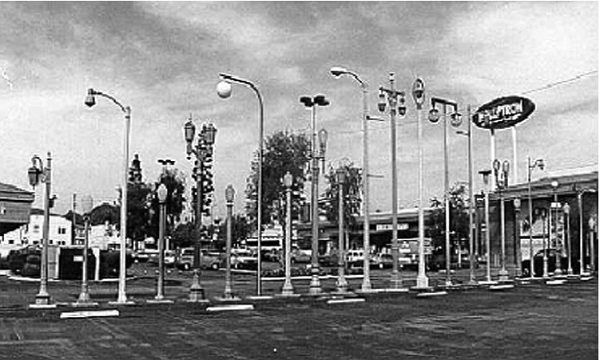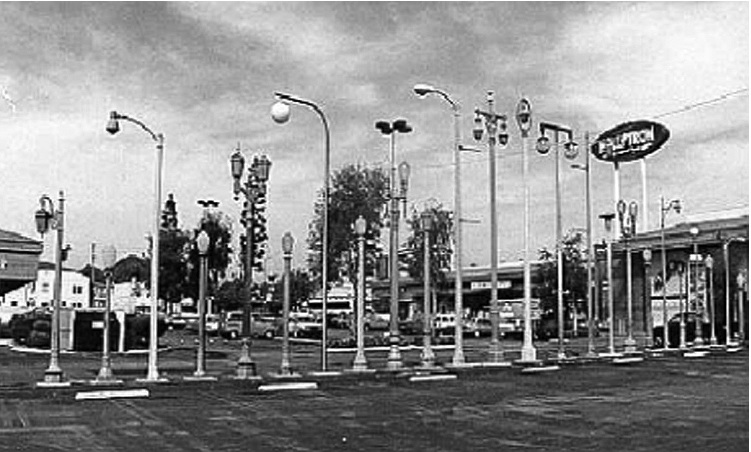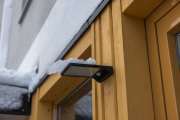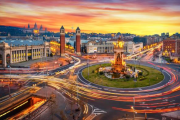There are many different types of street lights in lighting field. A street light is a Luminescent lighting system which is used on roads, streets and public squares. It usually starts to shine at night or in the dark, and goes out after dawn.
The basic function of street lamp is illumination, it also can be applied to Art Work, Landmark, Signpost, Telephone Booth, Message Board, Mailbox, Advertisement Lamp Box, etc. Street Lights are used outdoors, so the luminaries must be sealed for waterproof and dustproof. The temperature of the water vapor inside the lamps will exceed 100 ℃ in extreme circumstances after the seal.
1 Different types of Streetlights:
Street light is made up of lamp housing, electrical appliances, light sources, lamp poles, lamp arms, flanges, and other built-in fittings.
The 6 types of distinguishing indicators of street lights:
a Different light sources:
- Sodium street lamp;
- led street lamp;
- Energy-saving street light;
- Xenon lamp;
- Non-polar street light.
LED street lights also can be divided into modular led street light, COB led street light, and flat-panel integrated led street light, etc.
b Sorted by lamp post material:
- Hot-dip galvanized iron street lamp;
- Hot-dip galvanized steel street lamp;
- Stainless-steel street light.
c Classed by shapes:
- Chinese street lamp;
- Antique street light;
- Landscape lamp;
- Single arm street lamp;
- Double arms street lamp.
d Different street lamp heights:
- High pole street light (15~40M);
- Middle pole lamp (12~15M);
- Road lamp (6~12M);
- Garden street lamp (2.5~5M);
- Lawn lamp (0.6~0.8M)
e Classifying on the basis of the method of CIE:
There are 3 indexes to divide types of street lights.
- Light Projection: indicates that the light emitted by the luminaire is spread vertically along the road. It is divided into short, medium and long projection street lights.
- Light Extension: indicates the extent to which the light emitted by a luminaire spreads horizontally across the road. It includes narrow, normal, wide lamps.
- Light Control: indicates the degree to which a luminaire controls glare. It is divided into 3 kinds which are called limited, medium, strict street lamps.
f Divided by power supply mode:
- Commercial street light;
- Solar led street light;
- Scenery complementary street lamp.
2 Why is street light so important?
There are many activities involved in creating lively, safe and sustainable spaces in the city. Just like pavements, good roads, accessible amenities are part of public spaces so too is lighting. It is one of the primary aspects of urban planning. Over the course of the last few decades, the understanding, planning and design of lighting has changed.
There have been many shifts in perspectives like the move from road lighting to lighting focussing on pedestrians. It is now more appropriate to design and implement night time illumination in terms of lightscaping rather than lighting. To understand the aspects of lighting design for urban public areas it is also important to know the advantages of lighting.
a Reduce crime: scare and beware the criminals
People working in night shifts, students finishing up late in the night at university, happy-go-lucky walking back home after a night out are all subject to the risk of crime and violence. While there are many measures taken to ensure pedestrian safety, it is quite natural for people to feel uncomfortable if the lighting is insufficient. Well lit areas are known to reduce the chances of crime. A brightly lit park or pathway deters criminals and boosts the confidence of pedestrians.
b Safety: reduce the risks of accidents and injuries
Safety is the essential advantage of lighting. By illuminating roads, parks and other public spaces, we reduce the risks of accidents and injuries. Lighting is especially important for driving in the night. Whether driving on the motorway or in residential areas, good lighting improves visibility and minimises the risk of accidents. With a growing number of people in urban areas opting for sustainable modes of transportation, cycling has become extremely popular. It is an added necessity to ensure that we are able to ensure the safety of cyclists. Well-lit public spaces also provide pedestrians the much needed sense of security to step out after sundown.
c Beauty: add charm to the city
When planning and developing architectural or location based landmarks a key aspect to facade/landscape design is lighting. Well designed lighting can enhance landmarks like boardwalks, promenades, sea front or lake fronts. These create beautiful ambiences and add charm to the night time facades and architectural views of the city.
Bright lighting also look very beautiful in night markets. The hustle bustle of the market complements a brightly lit street with vendors, shops and hawkers all selling their wares.
3 Why do so many people prefer LEDs?
Here are some particular advantages of LED street lights:
a Longer lifespan: 30,000–80,000 hours or longer
Unlike incandescent lighting, LEDs don’t “burn out” or fail, they merely dim over time. Quality LEDs have an expected lifespan of 30,000–50,000 hours or even longer, depending on the quality of the lamp or fixture. A typical incandescent bulb lasts only about 1,000 hours; a comparable compact fluorescent lasts 8,000 to 10,000 hours. With a longer operational life, LEDs can reduce labor costs of replacing bulbs in commercial situations, achieving a lower maintenance lighting system.
b Durability: more stable in harsh environment
Without filaments or glass enclosures, LEDs are breakage resistant and largely immune to vibrations and other impacts. Traditional lighting is usually contained in a glass or quartz exterior, which can be susceptible to damage. LEDs, on the other hand, tend not to use any glass, instead they are mounted on a circuit board and connected with soldered leads that can be vulnerable to direct impact, but no more so than mobile phones and similar small electronic devices.
c Energy efficiency: LEDs use 50% less electricity than traditional incandescent
LED lights use about 50 percent less electricity than traditional incandescent, fluorescent and halogen options, resulting in substantial energy cost savings, especially for spaces with lights that are on for extended periods. LEDs also aim light in a specific direction unlike conventional bulbs, which emit light—and heat—in all directions (because LEDs are mounted on a flat surface, they emit light hemispherically rather than spherically). This directional lighting capability reduces wasted light and energy.
d Instant on: bright instantly and with no re-strike delay
Most fluorescent and HID lamps do not provide full brightness the moment they’re switched on, with many requiring three minutes or more to reach maximum light output. LEDs come on at 100-percent brightness almost instantly however, and with no re-strike delay. This can be advantageous following a power outage or anytime employees open a building during early morning hours when it is still dark outside.










